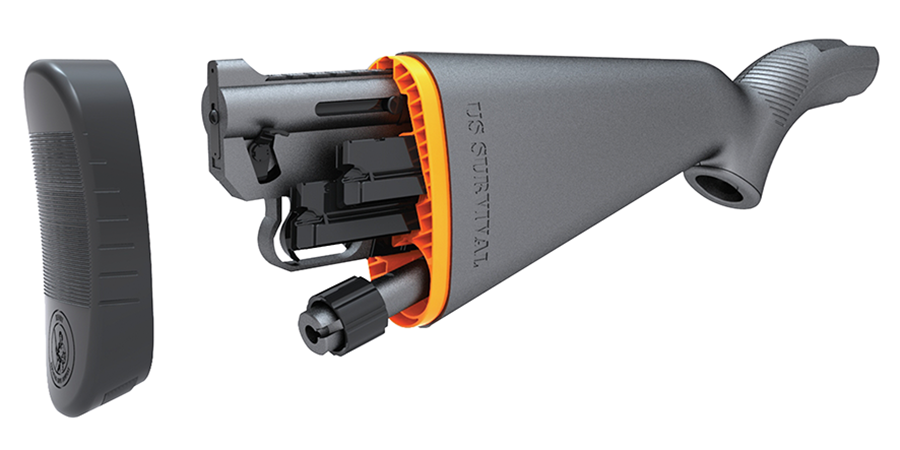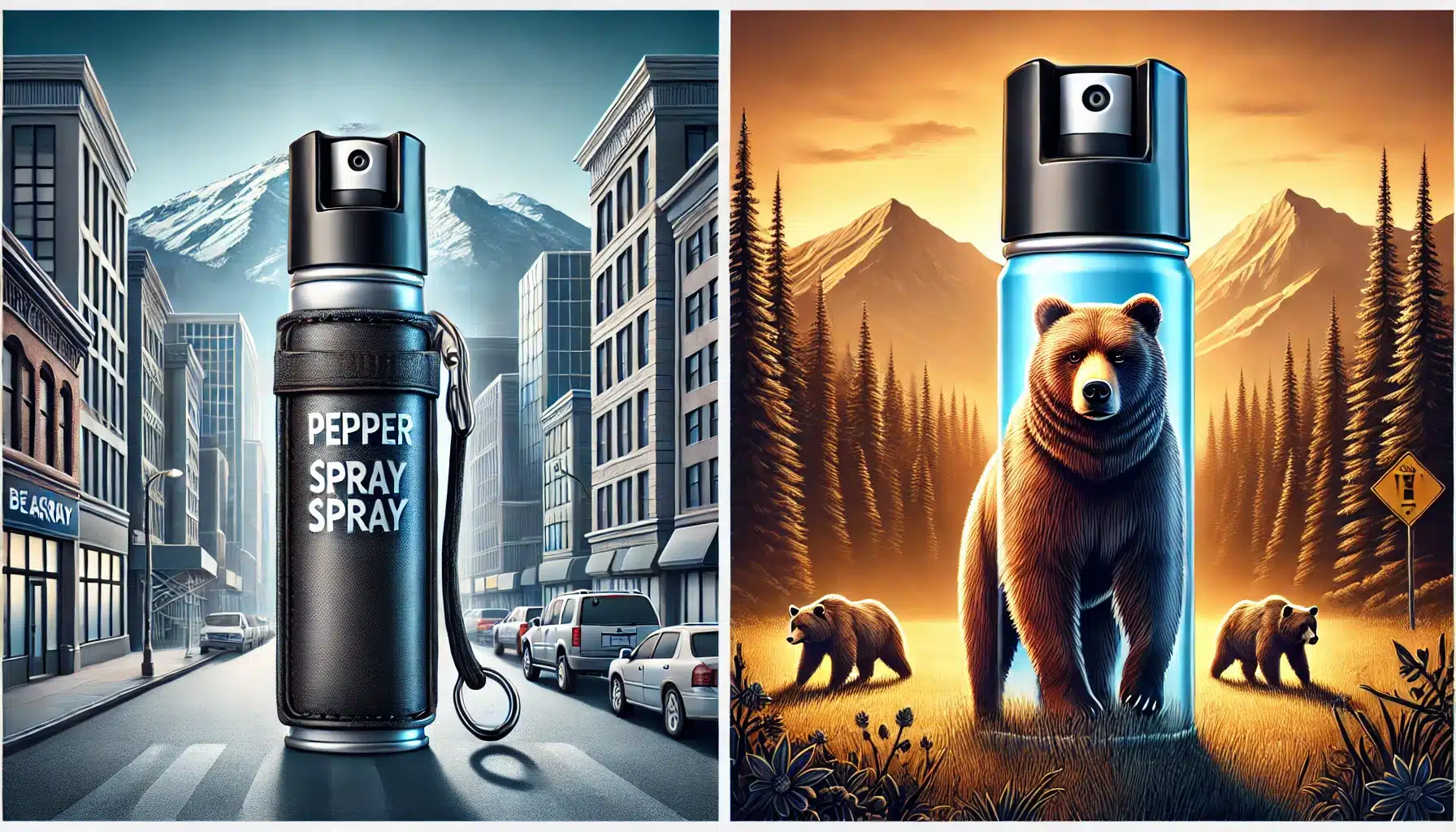
A survival rifle is typically a minimalist rifle that can be broken down and stored in a vehicle, boat, aircraft or backpack and brought to use as a “last resort” firearm for taking wild game. As such, it is typically chambered in calibers like 22 LR, 22 Hornet or 410 shotgun. A typical survival rifle is not the ideal firearm for big-game hunting or home defense. This is something to have when you may need it most. One of the most popular designs was built by Armalite as the AR-7.
The concept of a survival rifle goes back to World War II. Pilots who were shot down but survived behind enemy lines were mostly lucky to have a revolver or maybe even an M1911A1. Those might be good for personal defense if you had to parachute into no-man’s land, but what if you had to bail out on a deserted island with no food prospects?
One of the first answers to these was the M4 Survival Rifle, made by Harrington & Richardson with a 14-inch barrel and wire collapsible stock. These were chambered in 22 Hornet and stowed under the pilot’s seat. They were replaced by the M6 Aircrew Survival Weapon, which was an over/under 22 Hornet/410 shotgun combination.
Be Prepared. Learn The Best Ways To Hide Your Guns.
In the 1950s, Eugene Stoner of Armalite came up with the AR-5, a takedown bolt-action rifle chambered in 22 Hornet and all the components were stored in the rifle’s butt stock. The Air Force never picked it up in an official capacity, but the research and development enabled Armalite to improve the idea and develop a semiautomatic 22 LR version for the civilian market.
By making the majority of the rifle from aluminum, Stoner was able to reduce the weight dramatically.
Story continues below video
The AR-7 breaks down into four components: action, magazine, barrel and stock. The entire rifle can be stored in the stock – it’s about 16.5 inches long that way — and is capable of floating in the water in this state for a brief period of time.
Armalite built them in three variants (camo, brown and black stocks) from 1959 to 1973 and in my opinion, these are the best of the breed. Although never adopted by the U.S. Military, they were built to a MILSPEC standard when the standard still meant something.
In 1973, the design was sold to Charter Arms, which made it until 1993. Charter Arms offered the AR-7 Explorer in black, woodland camouflage and a “silver” hard chrome plated version. In the 1980s it offered an Explorer pistol, which resembled a Mauser Broomhandle pistol, but was chambered in 22 LR and used many of the parts from the AR-7 rifle.
You get a mixed bag with a Charter Arms AR-7. Some work great and some are ammunition sensitive; others are complete junk. They may represent the majority of AR-7 rifles in the wild and are most likely the source of the rifle’s less-than-stellar reputation with some shooters.
In 1996, the rifle was offered by Survival Arms of Cocoa, Fla. Information is scarce on this entity, but in all likelihood it was simply an offshoot of Charter Arms to set the rifle apart from the revolvers the company was more famous for offering. They seemed very similar to the Charter Arms rifles I had tried.
A few years later the rifle showed up on dealer shelves with the markings: “AR-7 Industries, LLC of Meriden, Connecticut.” I have not tried one of these models, but heard that Armalite Industries bought the company out and dissolved it for whatever reason in 2004.
Henry Arms picked up the design around that time and has been making the AR-7 for more than a decade. While early rifles had some feeding problems, the current versions have shown a lot of improvement.
For one, they ditched the fiberglass stock (which was prone to cracking on every other variant, including Armalite) and went with ABS plastic. The butt stock has room to store three magazines instead of one (the trick is to leave the third magazine in the action).
Most importantly, they eliminated the old-style aluminum barrel with a steel liner, which had a tendency to bend or warp and opted for an all-steel barrel, which may weigh a bit more but increases accuracy and reliability. In addition, all of the rifle’s parts are coated in Teflon, and they added a legit scope rail to the top of the receiver.
If you have been intrigued by these rifles and are thinking about one or two for your preps, I recommend Henry’s version, first. It was made with all the right upgrades and it is relatively inexpensive. If you’re looking at a used rifle, I would recommend Armalite or AR-7 Industries over the versions by Charter/Survival Arms.
With quality magazines and quality ammunition, these rifles work as intended. The other half of the problem may be over their use. That is, these were never meant to be taken to the range every weekend to see how fast you could burn up a brick of 22 rim fire. I like to think of them in the same way I think of the “mini spare” tire in a car.
It’s enough to get you home, but you don’t want to run the Indy 500 with it.
Have you ever shot an AR-7? What did you think? Share your thoughts in the section below:
Pump Shotguns Have One BIG Advantage Over Other Shotguns For Home Defense. Read More Here.









